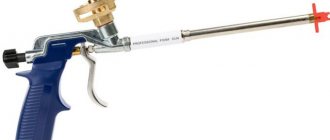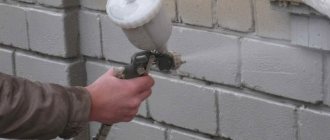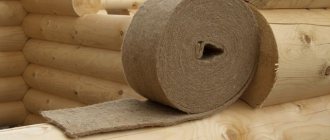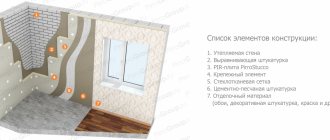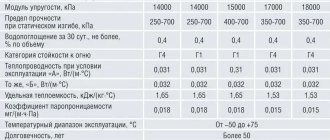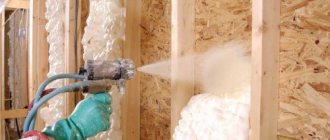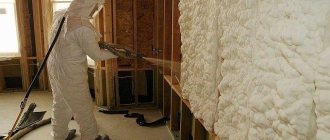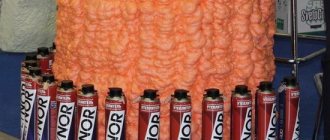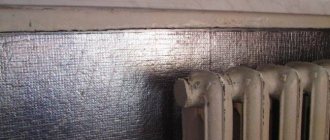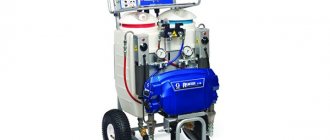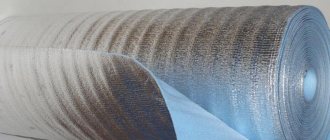SCOPE OF APPLICATION OF POLINOR INSULATION
Foam polyurethane thermal insulation, thanks to technical characteristics that are an order of magnitude superior to other thermal insulation materials, has always been considered the most effective way to insulate a house.
However, due to its inferiority to classic insulation in terms of availability and cost, PU thermal insulation for polyurethane insulation has not yet become as widespread as mineral wool, polystyrene foam, and polystyrene insulation produced by extrusion.
Problems with accessibility were explained by the fact that to insulate a house, which requires a fairly large amount of foam insulation, until recently it was necessary to use the services of contractors, or buy special equipment, raw materials, and delve into the basics of thermal insulation yourself.
With the advent of polyurethane insulation Polinor, the situation changed in the opposite direction. Now, in order to insulate even a large surface, you do not need to look for external contractors or invest in expensive equipment.
Polinor is a polyurethane insulation that is produced in compact cylinders, the contents of which are enough to insulate one square meter of surface, with a thermal insulation thickness of 6 centimeters.
If we compare the cost of thermal insulation with Polinor cylinders with the price that will have to be paid for insulation services to third-party organizations, the difference is more than obvious.
The average statistical cost of insulating one square meter of polyurethane foam by a team of workers today is about 1-1.5 thousand rubles per square meter, which includes the cost of insulation and work. At the same time, the price of one Polinor cylinder (per 1 m²) is approximately 500 rubles.
Polyurethane insulation Polinor
Based on the above, Polinor is an ideal option for polyurethane foam thermal insulation for private use. This material can be used to insulate the following surfaces:
- Internal walls and facades of houses made of any material - brick, concrete, gas silicate blocks;
- Lag floors, and any coverings with a non-load-bearing structure;
- The inner surface of the pitched roof;
- Attic, attic floor (Astratek liquid insulation is used);
- Foundation, basement, ground floor.
The liquid form of Polinor allows it to be applied to any surface, as a result of which the material is often used to insulate sewer pipes, hot and cold water supply located outside the building.
It is worth noting that the release form of Polinor somewhat limits the possibilities of its use. Insulation cylinders do not have the level of pressure required to foam the empty space in hollow walls. Polinor is an insulation material used exclusively for spraying.
In general, as evidenced, in one working day, one person can thermally insulate approximately 80-100 square meters of insulated surface with Polinor.
Structure of hardened polyurethane Polinor 1.1 ADVANTAGES OF POLYNOR The key advantages of Polinor over other PU thermal insulation are, of course, cost-effectiveness, convenience and ease of installation. You can also highlight the following strengths of Polinor: Fast hardening - within one hour;
- Mice do not eat (as well as liquid thermal insulation);
- No cold bridges are formed;
- Does not have a negative effect on the human body;
- Does not require special expensive equipment;
- Highest efficiency;
- Durability;
- Closed cells do not allow steam and moisture to pass through;
- The material has the ability to self-extinguish in the absence of direct exposure to fire 1.2 TECHNICAL CHARACTERISTICS
- Polynor sprayed polyurethane insulation has technical characteristics superior to most of the insulation on the market, such as mineral wool, polystyrene foam, and extruded polystyrene foam.
The properties of balloon Polinor are virtually identical to those of industrial polyurethane foam produced in pneumatic units.The process of spraying Polinor insulation
Let's consider the main technical characteristics of polyurethane thermal insulation Polinor.
- Thermal conductivity coefficient - 0.023 - 0.025 W/μ;
- The density of hardened foam is over 28 kg/m³;
- The number of closed pores in the insulation structure is no less than 70%, as in the Izospan V vapor barrier;
- Moisture absorption when immersing insulation in boiling water for 90 minutes – 2%;
- The upper limit of the permissible operating temperature is 121 degrees (in this mode, Polinor does not lose its characteristics for about a year);
- The average durability of the material is 40-50 years;
- Polinor is an elastic foam that does not collapse when deformed up to 50% of the original volume;
- Resistance to wet environments – maximum;
- Environmental performance – certified for internal thermal insulation of indoor residential premises.
- Sprayed thermal insulation from Polinor can be applied to the surfaces of any building material. Let's consider the adhesion characteristics of PU foam in relation to some of them.
- Aluminum – 1 kg/cm²;
- Brick, reinforced concrete – 2.5 kg/cm²;
- Plywood, wood – 1.5 kg/cm²;
- Steel – 1.5 kg/cm²;
- Cast iron – 2 kg/cm².
- The durability of Polinor and foam insulation is determined not only by the resistance of the material to a humid environment, but also by chemical resistance.
Polinor easily tolerates direct contact with organic solvents - acetone, alcohol, toluene, gasoline, and kerosene, any vegetable oils, cement and soap solutions.Thermal insulation by Polinor of the attic floor
Methylene chloride, chloroform, dichloroethane, and concentrated solutions of hydrochloric acid (concentration over 36%) have a negative effect on the material, under the influence of which Polinor is prone to swelling. Contact of insulation with sulfuric and nitric acid, which corrode polyurethane thermal insulation, is extremely undesirable. Some even insulate the front door.
Why is POLYNOR warmer and more profitable?
Polinor looks more efficient than other materials, including sprayed analogues, due to the low thermal conductivity coefficient and the most rational heat capacity indicators. For these reasons, it retains the temperature better and does not let heat out.
This material is more profitable both in terms of process availability, as well as for budgetary reasons.
Installation
The working surface itself is prepared: it is cleaned of dirt, dust, various stains and foreign deposits. Only in this case the level of sticking (adhesion) of Polinor will be maximum.
Scheme for applying polyurethane foam:
- The prepared, cleaned surface is moistened.
- The contents of the can are thoroughly shaken.
- A special attachment is put on and the gun is installed. The coating layer depends on the force of pressing the trigger.
- After completion of work, the remaining material is cleaned using a special cleaner.
Composition and technical characteristics
Polyurethane foam insulation is a combination of two polymer components: polyol and isocyanate. As a result of their connection, carbon dioxide is released, which foams the structure of the heat insulator. After hardening, the material forms an insulating layer filled with many cells with carbon dioxide.
Characteristics of closed cell polyurethane foam:
- thermal conductivity coefficient – 0.019-0.025 W/m*K;
- the number of sealed cells is about 90%;
- density – 25-250 kg/m3;
- moisture absorption – 1-3%;
- vapor permeability – 0.02-0.05;
- sound absorption – average;
- There are waterproofing properties.
The density of open-cell polyurethane foam is 8-18 kg/m3, moisture absorption is up to 60%, thermal conductivity is 0.025-0.045 W/m*K. Foam with an open structure absorbs sound well .
Closed cell polyurethane foam is excellent for insulating basements, foundations and other structures in contact with the ground. The material is also suitable for external insulation. Open-cell polyurethane foam is acceptable for thermal protection of roofs, ceilings and walls, but requires a water-repellent finish .
Price
The cost of the material is one of the main arguments when choosing insulation.
The average price of 1 Polinor cylinder (1 l) is 450 rubles . Cleaning fluid and gun are purchased separately.
Polinor compares favorably with its analogues, including sprayed ones, by the economical consumption of the spray composition and the absence of costs for the purchase of expensive auxiliary equipment.
In general, this heat insulator easily justifies all the costs of its purchase and installation. And thanks to its qualities, it can rightfully be called an ultra-modern innovative material for thermal insulation.
What is polynore
Polinor is a one-component polyurethane foam, which in its thermal characteristics is superior to polystyrene foam and insulation from various types of mineral raw materials, but the main difference between Polinor and polyurethane foam is its compact packaging in cylinders, which does not require either bulky expensive equipment or the involvement of contractors for operation - you only need a gun - sprayer and strict compliance with the manufacturer's requirements. One Polinor cylinder is enough to insulate 1 m2 of area with a thickness of 5–6 cm.
The weighted average price of insulating 1 m2 of sprayed polyurethane foam with the involvement of a team of insulators will be 17-26 dollars, while the cost of a polynore cylinder is 7 dollars, and all insulation work can be done independently.
A sprayed thermal insulator such as Polinor is designed for thermal insulation of almost all types of surfaces:
- Wall structures made of materials such as brick, concrete, lightweight concrete blocks, wood and wood materials.
- Floors and attic floors arranged on joists.
- Internal surfaces of attic and attic slopes.
- Foundations, basements, ground floors.
- Various communications - water supply, sewer, heating pipes.
Unfortunately, the low pressure in the cylinder will not allow the use of foam to fill cavities in the walls of three-layer structures, but when sprayed onto a surface, one insulator can insulate up to 100 m2 of surfaces with polynore per shift.
Properties
The main goal of Polinor is to effectively insulate a structure from noise and maintain the required temperature in it.
Being a high-class sprayed insulation, the material has the lowest thermal conductivity among analogues presented on the domestic market. So, if mineral wool has a heat saving of 0.045 W/m*deg, penoizol - 0.06, and polystyrene foam - 0.033, then for POLYNOR this figure is 0.023 W/m*deg.
It is important to note that the lower the thermal conductivity, the higher the thermal insulation characteristics, i.e. material consumption will be significantly less.
In addition, POLYNOR does not require additional treatment with a protective film and does not require the purchase of accessories for installation.
Advantages
Polyurethane material has the following obvious advantages:
- High degree of adhesion to building surfaces of various qualities (possibility of using Polinor in combination with any popular building materials: brick, plastic, stone, concrete, wood).
- Reduced ability of the material to ignite.
- Low labor intensity, simplicity and ease of installation (no additional frames or special skills required).
- Environmental friendliness and low degree of toxicity of the mixture (after complete drying it does not emit substances harmful to human health into the atmosphere).
- Durability (official warranty from the manufacturer is 45 years, while the insulator serves without crumbling or sagging).
- The material, due to its lightness and airiness, does not create additional load on the frame and load-bearing elements of the building.
- The elasticity of the mixture makes it resistant to cracking and any mechanical vibrations during the repair process.
This sprayed insulation is biologically passive, that is, it does not attract rodents and is significantly resistant to the appearance of fungi, mold and other harmful microorganisms on the treated surface.
Flaw
It is important to understand that during the process of spraying and polymerization, the material releases harmful chemical compounds, the effects of which can be protected by using protective gloves and a respirator mask.
After the mixture hardens, it loses its toxic properties, but a faint polymer odor may persist for several days.
Advantages and disadvantages
The growing interest in a new type of heat insulator is dictated by the following advantageous qualities:
• a simple method of insulation that does not require special equipment and skills to work with it; one person can handle the job;
• good adhesion to many building materials;
• high productivity (a 1 m2 area is processed in just 2 minutes);
• low thermal conductivity;
• monolithic surface of the heat-insulating layer, eliminating the formation of cold bridges;
• additional sound insulation;
• ensures that the dew point moves towards the street, which prevents the formation of condensation;
• high resistance to aggressive chemical compounds;
• long service life (the manufacturer declares an operational period of up to 50 years);
• inertness to microbiological processes;
• the material is not interesting to insects and rodents;
• when insulating surfaces, it does not require the creation of an additional windproof and vapor barrier layer.
When using Polinor, it is worth considering the disadvantages of the material:
• poor resistance to ultraviolet radiation;
• nuances when applying a layer to obtain a uniform protective surface;
• compliance with the temperature regime during work (from 15 to 35 degrees plus);
• with prolonged interaction with water, the structure of the insulation is destroyed.
Spray insulation technology
At first glance, the work methodology seems simple and understandable. However, to do the job well, you need relevant experience. It is important to set up the equipment correctly , calculate the optimal spray thickness and evenly treat the surface.
Tools and equipment
To operate, you will need a low or high pressure electro-pneumatic installation. As a rule, the kit already includes hoses and a spray gun. Consumable tanks must be ordered additionally.
When choosing equipment for insulating a frame house with polyurethane foam, you need to take into account a number of parameters:
- Possibility of heating the composition. The operating temperature for the chemical reaction of the components is +20-25°C; when lowered, the polyurethane may thicken - this will increase consumption and reduce the quality of the coupling.
- Mobility and compactness. This quality is especially important when performing high-altitude work.
- Performance. To process large areas, it is not advisable to purchase or rent a low-power unit.
In addition to equipment, you will need protective equipment : a respirator or gas mask, cotton or rubber gloves, shoes, overalls, goggles, overalls.
Consumption per 1 m2
As noted in the advantages, this insulation is quite economical. The consumption of polyurethane foam in cylinders is as follows: 1 liter is enough to cover a wall of 1 m2 with a layer 4 cm thick. For comparison, when working with mineral wool, you will need to spend more. In addition to the material, additional elements are needed for insulation, that is, sheathing, fasteners, etc., which also costs money.
Calculation of insulation thickness
It is better to entrust calculations to specialists. When calculating the thermal insulation layer, many parameters are taken into account:
- type and thickness of building material;
- type of structural element: wall, roof, ceiling, etc.;
- thermal conductivity coefficient of building material;
- climatic conditions of the region;
- qualitative characteristics of the polyurethane foam itself: type, density.
Average insulation thickness values for the central region of the Russian Federation when using polyurethane foam with closed cells:
- walls – at least 50 mm;
- roof, attic – 120-140 mm;
- basements, floors – 50-70 cm;
- foundation – 30-70 mm.
Preparatory activities
Before applying the solution, the walls of the house must be cleaned and dried - residual dirt, dust and other debris will interfere with the normal adhesion of the foam to the surface. Check the integrity of the coating; dents and cracks with a diameter of more than 5-6 mm must be removed. They must be covered with cement mortar.
The next step is to install the frame for the upcoming cladding. Make a sheathing from a wooden beam or metal profile. The frame posts must be placed strictly vertically and have a single plane.
If on the day chosen for work there is high humidity or there is rain in the forecast, then the “foam” treatment must be postponed to another time. Optimal conditions are a sunny but not hot day, the surface temperature should not exceed +30°C.
Spraying polyurethane: step-by-step instructions
The preparation of the composition depends on the form of its release. Polyurethane foam in cylinders (Polinor) is ready for use. The container must be placed in the mounting gun and shaken well.
Two-component mixtures sprayed under pressure require special preparation:
- Mix the first mixture with a mixer.
- Shake the second element (hardener) well.
- Combine the components according to the instructions, usually the proportion is 1:1. When preparing, you must avoid getting debris and moisture into the mixture.
- Fill the tank with the finished product to feed into the spray gun.
Rules for spraying polyurethane foam:
- First of all, foam is applied to hard-to-reach areas: areas near the chimney, ventilation holes, walls of complex configuration.
- Each subsequent layer of polyurethane foam is sprayed only after the previous one has completely hardened.
- It is advisable to complete all work in one day. For large processing areas, you need to enlist the help of an assistant.
- The maximum thickness of one layer is 15 mm, the minimum number of coatings is 3.
- Areas that do not require thermal insulation must first be covered with dense material.
- Polyurethane foam is applied from bottom to top, the composition is distributed between the elements of the sheathing.
Installation technology
The process of applying thermal insulation begins with surface preparation: degreasing, cleaning of debris and flaking old building materials. The evenness of the base does not matter and only affects the consumption of Polynor. The insulation has unique adhesion properties, so all non-insulated structures are protected from the penetration of foam; in a frozen state, it is difficult to remove. A nozzle for sprayed thermal insulation is included in the kit; in theory, the thickness of the layer can be controlled without problems, but in practice, uniformity requires experience. No guides, frame or lathing are needed for installation.
The surface is slightly moistened: sprayed polyurethane foam does not like dust. A prerequisite for the technology is the use of PPE: mask, suit and respirator. After the bottle with insulation is screwed on, the nozzle is shaken well and directed to the desired area. The thickness of the spraying is regulated by changing the pressure on the trigger of the construction gun. Upon completion of work, all tools are washed with a special cleaner (Polynor Cleaner).
Several nuances are noted:
- The process of foam formation depends on conditions: air temperature and the absence of wind and dust. During spraying of the material, it is recommended to shake the insulation in the cylinders periodically.
- The included nozzle must not be used for installing regular construction foam.
- The average polymerization speed is 40 minutes; final hardening requires at least 3 days.
- Polynor sprayed polyurethane insulation requires UV protection and can be painted, plastered or hidden without delay.
- Despite its high resistance to moisture and aggressive environments, this insulation does not have hydrophobic properties; it is not used in areas constantly in contact with the ground. Simply put, Polynor does not require a vapor barrier, but is not suitable for use as a stand-alone waterproofing solution.
Price
| Name | Approximate consumption per 1 m2 with a spray thickness of 4-5 cm, | Spray nozzle Polynor | Price per bottle of insulation, rubles |
| Polynor | 1 bottle (890 ml) | Included | 480 |
The cost of professional services for Polynor spraying is 650 rubles per 1 m2, the savings when applying it yourself are obvious. Construction companies are contacted when there is a need for quick thermal insulation of objects with a large area: cottages, industrial premises, attics, basements, carriages and vehicles. The only way to save money is to purchase sprayed liquid polyurethane foam in bulk from a trusted supplier. It should be remembered that insulation consumption increases when work is carried out in the cold season, the optimal air temperature is above +20°C.
Release form
Sprayed insulation has been known since 2013. It is a one-component self-expanding mixture with a closed-cell structure.
In construction stores, this thermal insulation is sold in cylinders similar to conventional foam for a gun.
It is applied in the same way as construction foam. According to reviews, one cylinder is enough for a 5-centimeter layer of insulation over an area of one square meter. The manufacturer's instructions state that the service life, in the absence of exposure to negative factors, will be at least 35 years.
Professional advice and customer reviews
Over several years of use, Polinor insulation has already managed to win admirers. Many professionals who have been using polyurethane foam for a long time have given their preference to the new product. It is noted that it is extremely easy to install, fits perfectly on any surface and has good characteristics during operation. Thermal insulation occurs quickly and at a high level.
It is also noted that the material is extremely toxic, so you should take precautions and protect yourself with special suits, gloves, respirators and goggles. If foam gets on the surface of the skin, rinse it thoroughly and consult a doctor.
Also, consumer reviews note that Polinor insulation is quite expensive in cost, but this factor should not be decisive when choosing insulation. The speed of application and excellent characteristics will allow you to save significantly on heating the room in the future.
The material is extremely toxic, so precautions should be taken
Professionals also often prefer this material. Its light structure and ease of application can significantly reduce the time and money spent on installing insulation.
Application method
- To apply Polynor to the surface, a spray nozzle is used, which creates a torch up to 40 cm wide.
- Polinor is sprayed at a distance of 10 to 45 cm from the surface to be insulated.
- Using an angle nozzle, Polinor can be applied to the ceiling and other horizontal surfaces.
- The speed of application of Polynor is several times higher than the speed of application of polyurethane foam.
- Using Polinor you can get a continuous insulating layer; during application you can adjust the thickness of the insulation.
- Polyurethane foam does not produce a torch even when using a special Polynor nozzle.
Feasibility of use
The scope of application of sprayed thermal insulation includes:
- Facades subject to mandatory protection with siding or plaster.
- Internal walls and partitions in private houses and industrial premises.
- Pipelines and communication systems.
- Verandas, attics, attics, basements.
- Premises with a small area: loggias and balconies.
- Containers with complex shapes, vehicles (if thermal insulation of vans or walls is necessary).
- Metal surfaces: doors in warehouses and garage doors.
Sprayed polyurethane foam is not used in layered masonry and closed frame structures due to the difficulty of access, but it does an excellent job of filling cracks and open voids. The material is suitable for both internal and external insulation; it is resistant to temperature changes and moisture. Provides trouble-free adhesion to working surfaces such as wood, concrete, steel, cast iron, aluminum, plywood, brick and glass. The limitations taken into account include the low fire safety class of the insulation (G3 - normally flammable, not supporting spontaneous combustion) and zero vapor permeability.
Advantages of the method and insulation
The main advantage of sprayed thermal insulation is the ability to create a seamless energy-saving layer on your own in an extremely short period of time. The technology does not require the installation of a frame or sheathing; the insulation has an increased quality of adhesion to almost all building structures and surfaces, regardless of their angle of inclination. The sprayed material is convenient to calculate, use and transport; exactly one cylinder is used per 1 m2. If necessary, re-application of insulation is allowed, but for most objects a standard layer of 5 mm is sufficient.
Reviews confirm the consumption and performance characteristics declared by the manufacturer; it is noted that paint and plaster adhere well to the material, and there is no accumulation of condensation on the surfaces. Not everyone considers this insulation affordable, but most are inclined to believe that its price is justified. Spraying does not require auxiliary building materials or complex equipment, and there is no need for overly thorough preparation of the working base. Sprayed insulation in cylinders is consumed without a trace, the process does not depend on the complexity of the design, insulation of hard-to-reach areas is not a problem.
Properties and technical parameters
Polinor insulation has excellent characteristics. Let's look at them:
- On average, the density of the layer that has frozen is 20 kg/m3. Maximum density – 28 kg/m3.
- Moisture absorption is 2%.
- Temperature range is from -25°C to +125°C.
- Initial hardening occurs after 45 minutes, final hardening occurs after 1.5 days.
- The service life is 50 years.
The heat insulator from the manufacturer Polinor is vapor-tight. The insulation is characterized by sufficient chemical and high biological stability. This is another advantage of this material.
Another plus is efficient consumption. One liter is enough to create a layer that is four centimeters thick per square meter of surface. Moreover, you will spend much less money on purchasing this product compared to mineral wool together with additional funds. Additional means are lathing, fasteners, membranes, and so on.
Despite so many advantages, this material is not without its drawbacks. Polinor insulation is a product that has normal flammability and belongs to the civil protection class. At a temperature of 450 degrees the layer melts. A short-term contact with fire is enough for the product, after which it begins to burn for five minutes. The second disadvantage is the irrational use of insulation in cylinders on surfaces that have a large area. But usually this material does not have such a purpose.
Please note the table containing technical specifications:
| Parameter name | Indicator value |
| Density indicator | 18-28 kg/m 3 |
| Water absorption | 2% |
| Thermal conductivity | 0.023-0.025 W/m×K |
| Temperature Range | -25°C to +125°C |
| Material layer thickness | 50-60 millimeters |
| Operational service life | 45-50 years |
| Crystallization rate at 20°C | ¾ hours |
| Final hardening time | 36 hours |
| Compression deformation | no up to 50% |
| Vapor permeability | absent |
| Fire hazard class | GZ |
Judging by the technical characteristics, the product is one of the best among liquid insulation materials (PPU).
Where is the material used?
Scope of application
New generation foam insulation is used for external and internal application. Depending on the characteristics of the objects, materials with open and closed cells are used.
Spraying is carried out on the following structures:
- Roofs of residential, commercial, administrative buildings and engineering structures. Since the main heat losses occur through the roof, a layer 10-15 cm thick is applied for high-quality insulation. When working in attic spaces, no additional finishing is required. Sprayed Polynor insulation, once cured, forms a durable outer skin. There are no odors or discharge.
- Technological containers. The use of polyurethane foam in cylinders for insulation of various tanks helps maintain a given temperature in them with minimal energy consumption. Domestic and industrial boilers are filled with polyurethane, foam is applied to the walls of swimming pools, storage facilities and other containers for storing and transporting various liquids that require stable conditions. In addition to tanks, foam is used to insulate pipes connected to them with a diameter of 20 cm or more.
- Walls. For harsh climates, Polynor insulation is an excellent solution to the problem of combating freezing of load-bearing structures. The material is in no way inferior in its characteristics to Penoplex roll insulation, surpassing it in speed of application and durability. The thickness of the layer varies between 5-10 cm depending on the type of structure and climate characteristics. Spraying is carried out inside the lattice frame, which is then covered with decorative cladding.
- Floors. A thick layer of PP is an excellent protection against cold and dampness coming from the ground or unheated basements. The material is applied to a concrete slab or subfloor in a wooden house. The lathing is pre-made, which is the basis for laying the finishing or intermediate coating. Ventilation of rooms is achieved by installing vents. The recommended application layer is 7-10 cm.
- Attics. Insulating these residential buildings with polyurethane foam allows you to create comfortable living conditions at any time of the year. To create a reliable barrier from cold and heat, you should spray at least 15 cm of foam. After this, the internal surfaces of the attic are sheathed with plasterboard, plywood or solid boards.
Depending on the treatment area, industrial equipment or one-time sprayers are selected.
Types of sprayed insulation
Sprayed ecowool
The technology of insulating objects with foam is naturally considered the most effective and promising. To achieve a high-quality result, you should familiarize yourself with the types of sprayed insulation and the procedure for their use. Products are divided into ready-to-use and those requiring preliminary preparation.
Sprayed thermal insulation in cylinders is freely available and is familiar to almost every home craftsman. Aerosol cans sold in hardware stores have a capacity of 500-1500 ml. Inside there is a liquid composition saturated with compressed air. Various models have their own bell or are designed to be installed in a special gun. Spraying is carried out after shaking and turning the product upside down by pressing the trigger. One 1000 ml can is enough to form 20 liters of foam or cover 1 m2 of surface with a layer 2 cm thick. This type of insulation can be used to treat small surfaces up to 10 m2. But even in this situation, 25 cans will be required to create a layer of 5 cm, which is the minimum acceptable when arranging buildings.
Industrial mixtures are made from several liquid components immediately before use. The raw materials consist of a base composition and a hardener. For this purpose, sealed containers, a high-pressure hose, a spray gun and a pneumatic installation are used. The optimal temperature for work is +20-25°C. Deviations lead to the solution foaming too weakly or too strongly. Both options lead to deviations in performance characteristics from the norm. If weather conditions do not meet the required conditions, the solution is heated or cooled.
The material is supplied from the bottom up, the thickness of each layer should be within 3-4 cm. To achieve the desired effect, you need to treat the surfaces 2-3 times after the previous layers have completely cured.
When using industrial equipment, you need to wear skin, eye and respiratory protection. The substance has the highest degree of adhesion and is extremely difficult to remove from the body, clothing and surfaces. Therefore, places that do not need insulation must be securely closed.
Characteristics of Polynor insulation (POLYNOR)
The new generation thermal insulator under this brand is an alternative solution to the problem of sprayed insulation. Packaging with a small volume allows you to economically consume the required amount of material and process areas of different sizes without wasting insulation.
The cylinders under a pressure of 6 atmospheres contain a one-component composition, which, upon direct contact with oxygen particles in the air, begins to activate, resulting in the process of its polymerization and hardening.
The ease of use of this material is manifested in low labor intensity and simplicity of the process. To get started, you just need to secure the insulation into a special mounting gun with a cylinder holder and press the trigger.
For information, when the first portion of insulation leaves the cylinder, a large outlet pressure is created, which can lead to the release of a large volume of the composition. Therefore, when you press the trigger for the first time, the spraying interval should be short - no more than 1-2 seconds.
The resource of one portion of insulation in a cylinder allows covering approximately 1.15-1.20 m2 with the material, with an insulating layer thickness of 45.0-50.0 mm. As a result of spraying, a cover of a soft but dense structure with open air cells is formed.
Warning! When working with Polinor insulation, toxic components are released into the air during polymerization. Therefore, the manufacturer recommends protecting the respiratory tract, eyes and skin until the insulation hardens.
However, the toxicity of individual components is temporary, and after the insulation suspension hardens, the material becomes absolutely harmless.
Most popular brands
The construction market is filled with foam insulation materials of domestic and foreign production. The following brands received the greatest number of positive reviews:
- Ecotermix;
- Titanium;
- TechnoNIKOL;
- Technology;
- Teplis;
- Polinor;
- Phorum;
- Penosil;
- Penoplex Fastfix;
- Home master;
- Sipur;
- Tri color.
When choosing a material, you need to carefully study the instructions for use, last of all, focusing on the price of the product.
Economic justification for the use of Polinor
If we compare the costs of laying conventional polyurethane foam and POLYNOR thermal insulation, then many factors speak in favor of the latter.
Firstly, its use can significantly save money on paying for the work of the installation team: this insulation is easily applied independently, and there is no need for knowledge of construction and technical basics.
Based on market prices in 2014, surface treatment with an area of about 100 square meters. it cost about 50 thousand rubles. These costs are similar to the costs of insulating a structure using mineral wool or expanded polystyrene. And if we compare the one-component effective heat insulator POLYNOR with a two-component mixture in the form of polyurethane foam, then the latter will cost almost one and a half times more.
The approximate cost of 1 cylinder of polyurethane sprayer POLYNOR with a volume similar to polyurethane foams is currently approximately 450 rubles. The modern Russian market is saturated with a lot of offers for the sale of Polinor, so you can always find the most acceptable price for yourself and discuss favorable delivery conditions.
Indoor insulation Polinor is packaged in an economical container, which is why purchasing more material than necessary is practically impossible, but there are no problems in re-ordering it. Please note that the standard package contains 12 cylinders with the mixture.
Installation features
There are special requirements for preparing the surface for applying insulation. First you need to clean it of debris, and then start removing grease stains. If this is not done, adhesion between surfaces will be significantly reduced. Work should be planned during the warm season. The recommended temperature regime for creating a heat-protective layer is within 17-20 degrees. Appropriate air temperature and low humidity levels will ensure uniform distribution of the composition throughout the work area.
You need to start insulating by studying the instructions and installing the nozzle on the cylinder. It is fixed until there is a characteristic click. Next, the cover is removed from the cross and the gun is screwed on. The nozzle is included with the heat insulator, but the gun will have to be purchased separately. The procedure for preparing the cylinder for use is performed in a vertical position. Before spraying one-component polyurethane foam, shake the container thoroughly.
The product must be distributed sequentially, forming a monolithic layer. The maximum thickness of the insulation should not exceed 5 cm. Upon completion of work, the gun is cleaned with a special solvent or mechanically.
Installation
When using Polinor there is no need to purchase expensive spray equipment. To get started, just put a specialized gun on the cylinder and press the trigger. The mixture has a high spray speed, it can be easily applied to flat surfaces such as walls and floors, and also squeezed onto the ceiling without fear of leakage or falling off.
It is important to note that after the first pull on the trigger, strong pressure is created, as a result of which too much of the spray mixture may come out. To avoid this, it is recommended to make the first descent within an interval of no longer than 1-2 seconds.
A good performance quality of Polinor is that the user has the ability to independently regulate the thickness of the applied mixture. With uniform spraying, you can achieve a layer of any size without seams.
There is no need for special surface treatment before applying polyurethane spray; it is enough to simply clean it of visible large contaminants.
Nuances
It is important to apply the mixture after shaking the container. Moreover, it must be at room temperature! It is best to spray the insulator onto a damp surface, which guarantees excellent adhesion. Applying 1 layer is usually not enough, so after it has dried, you should spray a second one so that the total thickness is around 40-50 mm. During operation, the cylinder should be shaken regularly, and at the end of the action, remove the gun and wash it, which makes it possible to use it on new containers with a heat insulator.
If, after the protective layer has dried, any damage or chips are found, they can be easily eliminated by applying a new layer of polyurethane insulator on top of the defective area. To increase fire-fighting properties, the material is treated with a special composition that will provide the surface with flammability class G1.
After applying the material and completely drying, it can be painted or plastered, as well as covered with plasterboard.
POLYNOR is an excellent innovative high-quality material, through the use of which it is possible to achieve effective insulation of structures and reduce heating costs.
Precautionary measures
Despite the safety of the Polinor composition, it is recommended to observe the following precautions when performing insulation measures.
• When the composition is released from the cylinder, there is an increased concentration of the chemical components of the insulator, which can cause irritation of the mucous membranes of the eyes, respiratory organs, and skin. Therefore, work should be carried out in special clothing, safety glasses, a mask or a respirator.
• Do not spray the contents of the cylinder near an open flame. The presence of gas may cause a fire. It is also prohibited to combine installation with smoking cigarettes.
• In the room where thermal protection is installed, you need to open windows and doors to organize good air ventilation.
In general, working with polyurethane foam insulator Polinor, produced in cylinders, is characterized by simplicity and uncomplicated application techniques, which is confirmed by user reviews.
The most popular brands of industrial heat insulation
Ecotermix. It is made on the basis of vegetable oils, and foaming occurs due to a substance that contains water. The product has a low content of components that negatively affect human health. There are 2 grades: 300 and 600. The first is intended for application to external surfaces, and the second to internal walls. This is due to the fact that brand 300 has a closed structure, and 600 has an open structure.
Sealection 500. The material is manufactured by the American company Demilec, has an open structure and a G2 fire safety class.
Healtok Soy 200. This raw material has a closed structure. Produced from soybean oil and polymer residues. After spraying, the dimensions increase 50 times, securely fixing to surfaces of any materials, filling all existing cracks and voids.
Structure
- The structure of Polinor insulation is finely porous, has no shells or voids, consists of 70% closed cells and 30% open cells, the density of the polymerized foam is 19-25 kg/m3, after application Polinor increases in volume by 20%.
- The structure of the polyurethane foam is distinguished by larger pores and cavities, it consists of 30% closed cells and 70% open cells, the density of the polyurethane foam is 11-20 kg/m3, the percentage of expansion during the polymerization process is 40 ÷ 250%.
- The surface of Polinor is smoother compared to polyurethane foam.
- Polinor has adhesion over the entire area of contact with the surface.
